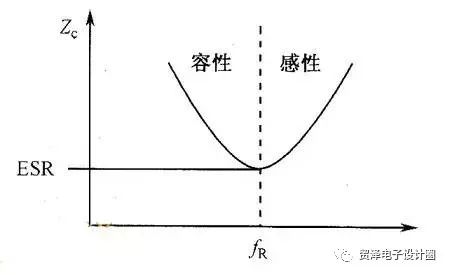When the frequency is high, the capacitor can no longer be treated as a simple lumped element, and parasitic parameters begin to play a significant role in its performance. These parasitic elements include the equivalent series resistance (ESR) and the equivalent series inductance (ESL). Understanding these factors is crucial for designing effective decoupling circuits, especially in high-frequency applications.
The real-world equivalent circuit of a capacitor consists of several components: the static capacitance C, the leakage resistance (also known as insulation resistance, denoted as Rp), and the dielectric absorption components, which are represented by Cda and Rda. While Rp is typically very large—often in the GΩ range—it can usually be neglected in practical designs due to its minimal impact. However, Cda and Rda are more important because they represent dielectric absorption, a phenomenon where the capacitor retains some charge after being discharged, leading to hysteresis effects that can affect signal integrity.
Among all the parasitic parameters, ESR and ESL have the most significant impact on the high-frequency behavior of a capacitor. To simplify analysis, the series RLC model is often used, as shown in Figure 1(b), to calculate the resonant frequency and the equivalent impedance of the capacitor.

In the frequency domain, the impedance of a capacitor follows a specific pattern. Below the resonant frequency, it behaves predominantly as a capacitor, but above this point, it starts to exhibit inductive characteristics. This transition causes the decoupling effectiveness of the capacitor to decrease significantly. As the frequency increases, the equivalent impedance first decreases and then rises, reaching its minimum value at the resonant frequency, which corresponds to the ESR.

From the resonant frequency formula (4-8), it's clear that both the capacitance value and the ESL directly influence the resonant frequency. This relationship is illustrated in Figure 3. Since the impedance is lowest at resonance, it’s ideal to select capacitors whose resonant frequency (fR) aligns closely with the operating frequency of the circuit. In environments where the operating frequency varies widely, using a combination of a large capacitor with a low fR and a small capacitor with a high fR can help maintain stable decoupling performance across different frequencies.

Understanding how ESR, ESL, and other parasitic effects influence a capacitor’s performance is essential for optimizing circuit design, especially in high-speed or high-frequency applications.
Porsche Dashcam,Dash Cam With G Sensor,Dash Cam With Loop Recording
SHENZHEN ROSOTO TECHNOLOGY CO., LTD. , https://www.rdtkdashcam.com